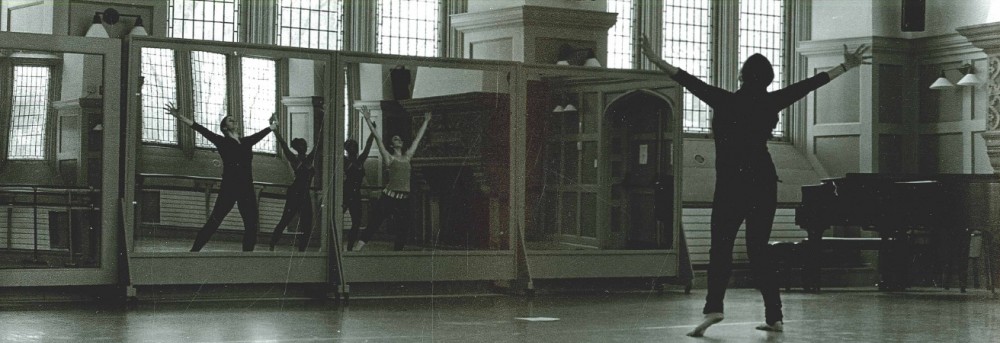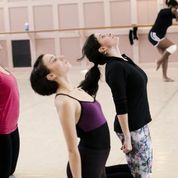…Continuing with the idea of legacy you also, when you were first introducing the dance, mentioned the concept of “tapping into the spirit” of the dance. I really felt that happen—I mean I saw it happen, that first full weekend— They’re great! They’re really just open and willing, they’re not resisting at all. They’re just eating it right up.
Well that brings up a question I was going to ask later but this is a perfect segue. Can you say a little about your experience here at Bryn Mawr? Anything unique? Well it’s a little different—in the process what’s a little different is that Mady [Cantor] has set it up so they’re going to get technique during the week, with Carrie [Ellmore-Tallitsch]—
I thought that was part of the “reconstruction package”— No, no she wanted them to have the technique as well, in addition—and have it be available to people who aren’t in the cast as well, who want to just have some Graham classes—so there’s like a Graham residency going on—And I think that’s important, especially in this age, how far removed we are from Martha, that you get multiple voices on the technique.
…Are there only certain dances from her repertoire that are available for reconstruction? The [Martha Graham] Center has a pretty clear idea of what translates well outside of the [Martha Graham Dance] Company—because the company is so well-versed in this very specific dance form—they are trained in it so that they can roll right into all of the aspects of the repertory. Not everything translates onto bodies that aren’t trained with that same force.
These dances in the ‘30s are so accessible for people who aren’t trained in Graham because the dancers themselves, of the 1930s, they weren’t going to conservatories and training all day. They were working women. And Martha didn’t have years and years of a codified technique. They were creating it together, so each of those dancers was contributing aspects to the technique and aspects to the pieces. That’s the communal part of it.

